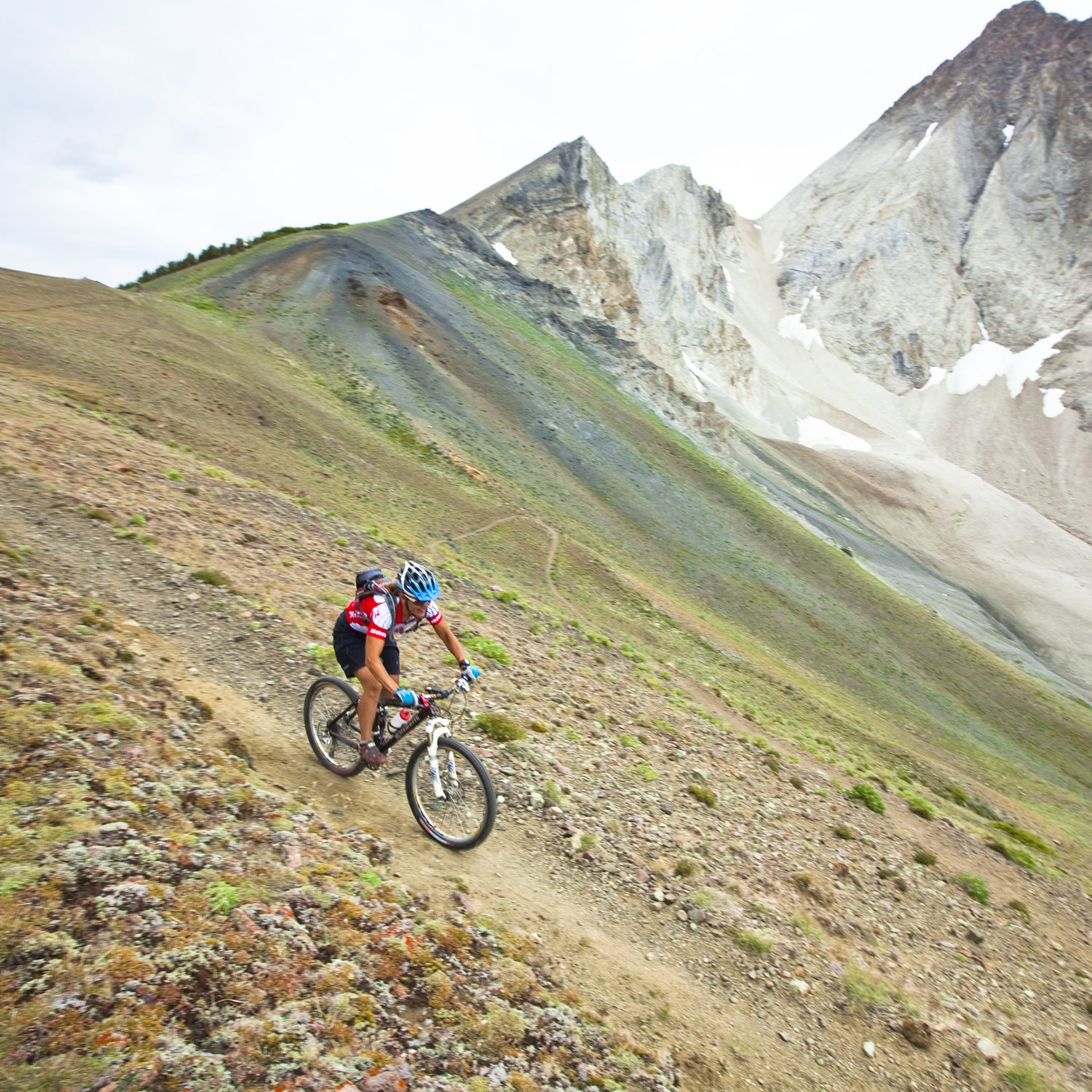On Friday, August 7, President Obama signed into law a bill that converted just over 275,000 acres among the —three separate areas collectively known as the Boulder–White Clouds. The area, north of Sun Valley and east of Stanley along Idaho State Highway 75, contains the East Fork of the Salmon River and 11,814-foot Castle Peak, which touched off the push to protect the area after Asarco (the American Smelting and Refining Company) proposed a molybdenum mine on its flanks in the 1960s. For years, it’s been obscure and sparsely trafficked by hikers, mountain bikers, off-road motorcyclists, skiers, hunters, and cattlemen. The president’s signature brings to a close a long and sometimes ugly debate. But it has also left many local mountain bikers, who’ve long ridden trails in the Boulder–White Clouds, disappointed that they’ll no longer be allowed in.
“My heart is broken, and the politics have left a very bitter taste in my mouth,” wrote professional endurance mountain biker and longtime Sun Valley resident of the wilderness designation.Â
The entire process has put riders in the increasingly familiar and uncomfortable position of opposing wilderness legislation. This particular push for wilderness was championed by Idaho Republican Congressman Mike Simpson, and in most respects, it’s a giant victory for cooperative land preservation in an era where seemingly every big decision gets made by the courts and by executive order. In fact, the one thing that brought about a legislative solution was Obama’s recent willingness to use the , as other presidents have done in the past, to designate large swaths of the American West as national monuments. National monument status would have given a larger 500,000-acre area strong protections but would have also required a lengthy and complicated management plan.
“The president clearly indicated that the national monument designation was not an idle threat,” says Marcia Argust, project director of the U.S. public lands program at the nonprofit , one of the conservation organizations that pushed for wilderness designation. “I believe that was the real catalyst.”Â
As local mountain bike activist Brett Stevenson wrote me in an email, “Can the conservation community continue to marginalize human-powered recreation when they actually really need them as future members?”
As of April 2013, Pew, along with the and the , had set aside hopes for a wilderness designation and joined forces with the  (IMBA) to call for a sweeping, 500,000-acre national monument designation. IMBA had an interest in the national monument plan because bicycles are among the mechanized methods of transport prohibited in federally designated wilderness.Â
But at a dinner last fall celebrating the 50th anniversary of the 1964 Wilderness Act, Simpson  White House adviser John Podesta—who’d been acting as Obama’s defacto monument czar—and asked him for roughly six months to get his wilderness bill done before the president waved his magic monument wand.Â
And so odd bedfellows were made. The Republican delegation detests the president’s use of executive orders. And the conservation organizations always had preference for wilderness over the national monument in this case. “We were the ones who brought up the monument idea,” says Pew’s Argust, but “our preference was for wilderness protection because it’s the highest form.” Only IMBA was left out of the new wilderness coalition.
Simpson reintroduced his bill in February. “This latest iteration cut out 60,000 to 70,000 acres,” says Brad Brooks, Idaho deputy regional director of the Wilderness Society and a mountain biker himself. The new bill, now law, laid out three separate wilderness areas that look a bit like a three-armed amoeba. Senator Jim Risch of Idaho required the cutouts between the arms to win the support of motorized users who’d otherwise lose access to those trails. Many mountain bikers were upset because the final bill included both the Ants Basin and Castle Divide trails, two classics. Many think their interests were sacrificed to win the support of motorized users.
But, insists Brooks, those trail exclusions weren’t just for motorized users. “The fact is they’re mostly singletrack,” he says. “Mountain bikers had a huge influence on this bill.” The Wilderness Society also points to other success stories where riders and wilderness advocates have been able to come together, notably the designation, last December, of wilderness and mountain biking areas in the  just north of bike-crazy Durango, Colorado.Â
Still, when it comes to Boulder–White Cloud, members of the cycling community have been up in arms. Local rider Tom Flynn started a on the news by stating, “It is a tragic time for the Boulder–White Clouds.”
While that might be an overstatement, it does get at a growing issue. As local mountain bike activist Brett Stevenson wrote me in an email, “Can the conservation community continue to marginalize human-powered recreation when they actually really need them as future members?”
According to the , there are roughly 8 million mountain bikers in America and 10 million backpackers. And mountain biking, when the was passed in 1964, is only getting more popular.
There are very real threats to the wilderness right now, and I think that the growing animosity among recreation interests is every bit as dangerous as the Big Creek mining road.
For bikers, the insult is compounded because older and more clearly detrimental practices like cattle grazing and mining are grandfathered into wilderness areas, as are many airstrips. Recently, just north of the Boulder–White Clouds in the Frank Church River of No Return Wilderness, the largest contiguous wilderness area in the Lower 48, American Independence Mines and Minerals Co. has been to construct four miles of “temporary” road into a mine site on Big Creek, a large tributary of the Middle Fork of the Salmon. New roads aside, the prospect of a gold mine seems more than troubling, especially in light of the recent mine tailings spill on Colorado’s Animas River.Â
There are very real threats to the wilderness right now, and I think that the growing animosity among recreation interests is every bit as dangerous as the Big Creek mining road. The risk is that, as biking gets more and more popular, cyclists will be able to or else block future wilderness outright. At a minimum, it’s a distraction. Indeed, in the wake of the Boulder–White Cloud legislation, a new cycling access group called the  has formed with the stated goal of battling “needless access restrictions.” Most dangerous of all is that the fragile coalition of recreation interests that’s critical to wilderness advocacy will have to spend time and political capital shoring up its own ranks instead of actually fighting for conservation. If hikers and bikers are at each other’s throats, the only interest group that will benefit is the one that would prefer extraction and development.Â
Personally, I don’t think there’s a place for bikes in the wilderness, but I do think they should be encouraged just about everywhere else. Clearly, though, there’s an emerging generation who both love wilderness and love their bikes and are struggling to develop a personal wilderness ethic that allows those two ideas to co-exist. And in many places, they're first learning about wilderness by getting thrown out of it.Â
Colorado-based biker, hiker, and photographer Jim Harris illustrates the tension. In an shortly after the Senate passed its legislation, he wrote: “Explain to me again how bicycles are in conflict with quiet, human-powered recreation? Or why mechanized travel via oar raft, climbing jumars, or ski touring bindings are given the green light?”
As Harris told me, “It’s a weird place to be as a proponent for wilderness.”
The Boulder–White Cloud legislation is a victory, but it comes at a cost. It’s easy to say that the bikers making a stink are just selfish. But I don’t think that’s right. In the long run, conservation can’t do without people like Harris.
There are real threats to the wilderness, threats like mining and development and climate change and feral cattle and local governments that resist federal cleanup funding for legacy mine waste. Threats like these can’t afford petty fractures in the coalition.


